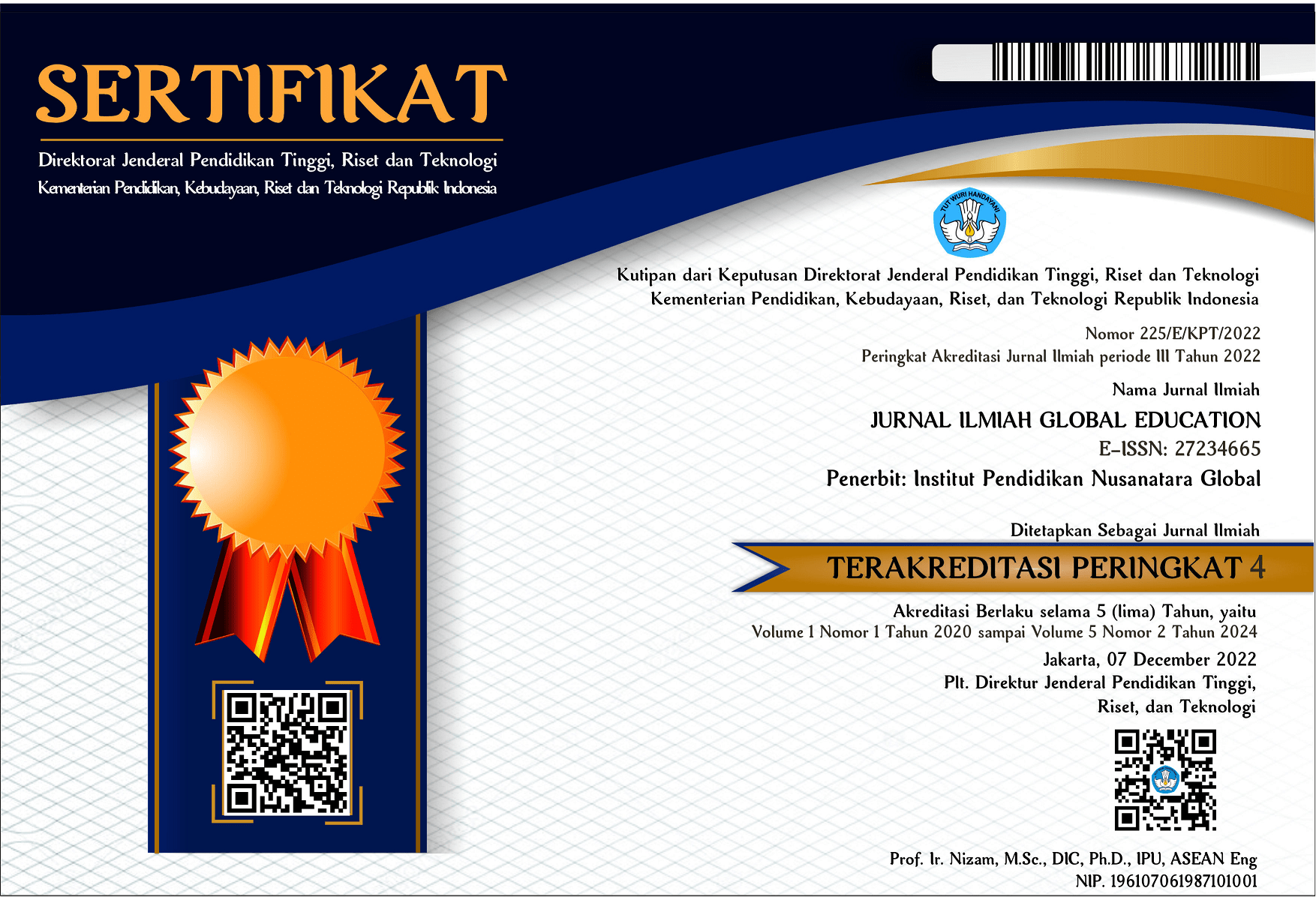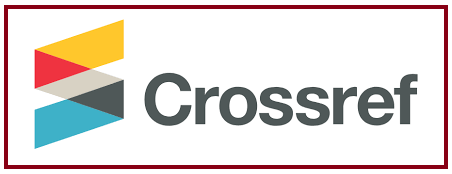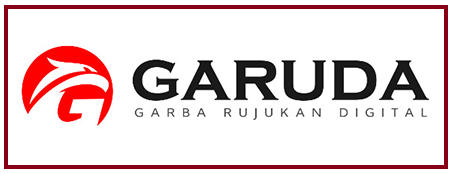BALAI ADAT SEBAGAI IDENTITAS PERSUKUAN MELAYU BAWI DI KENEGERIAN KUOK
DOI:
https://doi.org/10.55681/jige.v4i3.1119Keywords:
Hall of Traditional, Identity, Bawi Malay TribeAbstract
This research was conducted in Empat Balai Village, Kuok District with the aim of knowing the history, culture and identity of the Bawi Malay Tribe in Kenegerian Kuok. This study used a descriptive qualitative method with data collection techniques in the form of observation, documentation and direct interviews with several research subjects who knew about the history and culture of the Bawi Malay ethnic group in Kenegerian Kuok. The traditional hall of the Bawi Malay Tribe is located in Kebuh Tengah Hamlet, Empat Balai Village. The traditional hall has a symbol in the form of a lion statue which symbolizes the tribe. The head of the Malay Bawi tribe is called Datuok Singo, according to his title lion which symbolizes strength and intelligence. The Bawi Malay Tribal customary hall functions as a place for deliberation and consensus to find solutions to any existing problems. The adat hall also functions as a gathering place for relatives and nephews from the Bawi Malay ethnic group, both those outside the city and abroad, such as the halal bihalal event. The purpose of holding the event is to strengthen the bonds of brotherhood among the Bawi Malay people. Therefore, the entire Bawi Malay ethnic community must contribute and participate so that the adat hall can function properly and remain sustainable as a form of cultural identity.
Downloads
References
Amelia, L. (2017). Fungsi dan Makna Balai Pada Perkawinan Masyarakat Melayu Langkat. 13.
Dewi, A. N. (2020). Kontrol Sosial Terhadap Fungsi Balai Adat Air Molek Di Kecamatan Pasir Penyu Kabupaten Indragiri Hulu. JOM FISIP, 4.
Indra, S. H. (2020). Pengantar Teori dan Metode Penelitian Budaya. Probolinggo: Pagan press.
Khusumadewi, A. (2016). Mengembangkan Identitas Budaya Individu Dalam Keragaman Budaya Masyarakat Indonesia. Prosiding Seminar Nasional Jurusan BK UNESA, 59.
Koentjaraningrat. (2007). Manusia dan Kebudayaan di Indonesia. Jakarta: Djambatan.
Koentjaraningrat. (1983). Pengantar Ilmu Antropologi. Jakarta: Aksara Baru.
Mirnalisa, C. T. (2019, Oktober 31). Budaya Sebagai Identitas Bangsa. Retrieved Mei.30, 2022, from Nada Riau: https://nadariau.com/2019/10/31/budayasebagai-identitas-dan pemersatu bangsa/
Merauke, S. (2022). Sejarah Suku Melayu, Karakteristik dan Kebudayaannya. In 2022.
Mukhtar. (2022, Mei 10). Sekda Kampar: Jadilah Ninik Mamak Panutan bagi Anak Kemanakan. Retrieved Mei 30, 2022, from Riau Bisa: https://www.riaubisa.com/berita/11017/sekda-kampar-jadilah-ninik-mamakpanutan-bagi anak-kemanakan
Rahmaniah, A. (2013). Budaya dan Identitas. Sidoarjo: Dwi Putra Pustaka Jaya.
Ratna, N. K. (2005). Sastra dan Cultural Studies: Representasi Fiksi dan Fakta. Yogyakarta: Pustaka Belajar.
Sophian, A. (2022, April 17). Balai Adat, Ikon Budaya dan Pariwisata Kabupaten Pelalawan Provinsi Riau. Retrieved Mei 30, 2022, from Potret News: https://m.potretnews.com/berita/baca/2022/04/17/balai-adat-ikon-budaya dan pariwisata kabupaten-pelalawan-provinsi-riau
Sujono. (2020, Oktober 25). Perkuat Fungsi Niniak Mamak, Mulyadi Fasilitasi Balai Adat di Setiap Nagari. Retrieved Mei 30, 2022, from Sindo News: https://daerah.sindonews.com/read/208370/174/perkuat-fungsi-niniak-mamak mulyadi-akan fasilitasi-balai-adat-di-setiap-nagari-1603635019
Tis. (2019, Februari 18). Pelantikan Ninik Mamak Sekda Kampar Yusri, Minta Agar Tidak Melakukan Perkawinan Satu Suku. Retrieved Mei 30, 2022, from Riau Madani: https://www.riaumadani.com/read-6610-2019-02-18-sekda-kampar-yusri-minta-agar-tidak lakukan-perkawinan-satu suku.html#sthash.VXEEIDJd.dpbs
Zaini, M. (2017). Mengenal Rumah Melayu Riau. Jakarta Timur: Badan Pengembangan dan Pembinaan Bahasa.
Downloads
Published
How to Cite
Issue
Section
License
Copyright (c) 2023 JURNAL ILMIAH GLOBAL EDUCATION

This work is licensed under a Creative Commons Attribution-ShareAlike 4.0 International License.













